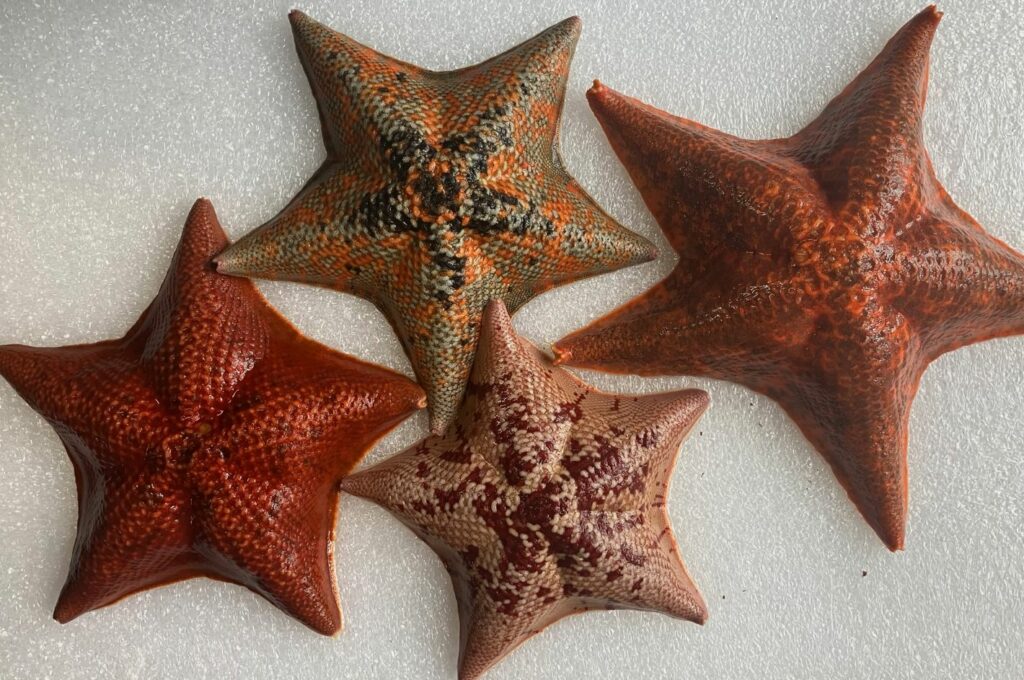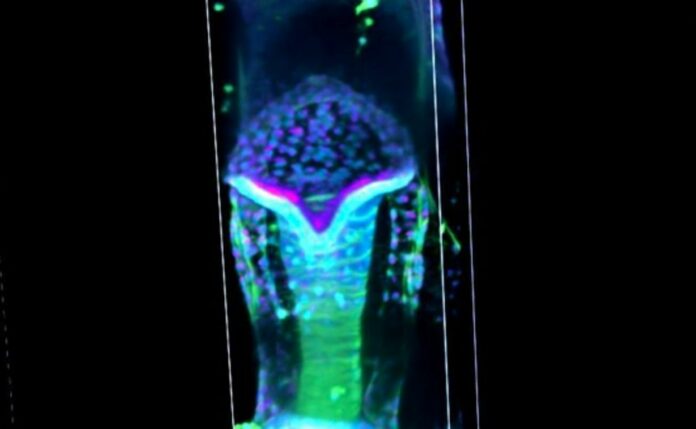We can now use this “to understand not only how our organs develop, but what happens to organs when we have a disease, especially cancer.”
Hollow, tubular structures are a fundamental aspect of embryonic development across the animal kingdom. These structures form the basis of various organs including the heart, kidneys, and digestive tract. Disruptions in this process can result in congenital disorders and regeneration defects.
However, the mechanisms of tubular structure formation are not well understood due to the diverse methods used by animals.
Fortunately, researchers are turning to the sea star as a model organism for studying this process.
Margherita Perillo of the Marine Biological Laboratory (MBL) and her colleagues have published a new study in Nature Communications which offers detailed insights into the early stages of tube formation in the sea star Patiria miniata.
Their work sheds light on the genetics and mechanics of tubulogenesis and provides a foundation for future research on organ formation.
“Most of our organs are tubular, because they need to transport fluids or gases or food or blood,” explains Perillo.
“And more complex organs like the heart start as a tube and then develop different structures. So, tubulogenesis is a very basic step to form all our organs,” Perillo said.
Sea Stars Offer Surprising Clues to How Organs Develop in Humans
Perillo’s choice of the sea star as a research organism was deliberate, motivated by her desire to understand the fundamental mechanism of tube formation that is common to all vertebrates. She sought an animal that was positioned at the base of the tree of life, before the chordates, and the sea star was an ideal candidate.
Through the use of CRISPR and other techniques to analyze gene function, as well as long time-lapse movies of the developing sea star larvae, Perillo and her team were able to discern the process by which the organism generates tubular structures that branch out from its gut.

Their findings reveal a basic toolkit that could have given rise to tubular organs in chordates, including fish, amphibians, reptiles, birds, mammals, and a few invertebrate subphyla.
Perillo explained that a major question in biology has been how organisms transform from a single cell into the intricate 3D tubular structures that form various organs. In some species, such as flies, there is an initial period of cell proliferation, followed by complex cell migration patterns that elongate, change shape, and eventually form a tube.
However, in other animals, including mammals, cell proliferation and migration occur simultaneously. Perillo’s study of sea stars revealed that, in order for tube formation to occur, cells can both proliferate and migrate concurrently, a process that is also observed in vertebrate development.
This suggests that the fundamental mechanism of organ formation was established early in the evolution of chordates, the group that includes vertebrates and a few invertebrate subphyla.
Sea stars not only offer insights into the process of organ formation, but also serve as a valuable model for biomedical research, according to Perillo. For instance, her team identified a gene called Six1/2 that plays a critical role in the branching process of tube formation. Knocking out this gene in mice led to abnormal kidney formation, but it also caused the mice to become resistant to tumor formation, even when exposed to tumor cells. As this gene is often overexpressed in cancer cells, understanding its function could provide new avenues for studying cancer progression and other diseases.
“I can now use this gene to understand not only how our organs develop, but what happens to organs when we have a disease, especially cancer,” she adds. “My hope is that, in five to 10 years maximum, we will be able to use this gene to test how organs develop cancer and how cancer becomes metastatic.”
According to Perillo, sea star embryos possess numerous practical experimental advantages. Being mostly transparent, they allow for direct observation of internal growth processes over extended developmental periods, all without causing any harm to the organism.
Moreover, sea stars are easy to collect and breed in large quantities throughout the year, providing researchers with ample material for their studies.
“So I always have a lot of material to work with.”
Image Credit: Stil from the video
